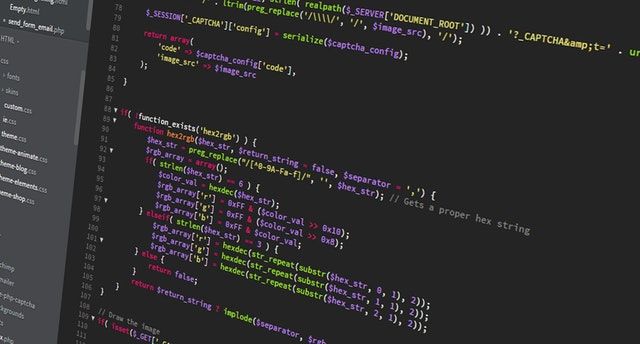The Smart Approach to Testing Financial Strategies

Imagine buying a car without taking it for a test drive, you’d never do that, right?
Yet many investors dive into financial strategies without properly testing them first.
The result?
Portfolios that falter and money lost to unnecessary mistakes.
Even organizations struggle during strategic planning when they stick to old habits, making it hard to adapt to market changes. Testing your approach before putting real money at risk isn’t optional, it’s essential. Smart investors treat testing as a safety net, turning potential risks into controlled, profitable opportunities and building strategies that truly work
Backtesting: Your Safety Net Against Market Chaos
Backtesting investment strategies involves running your concepts through decades of actual market history to see their track record. Think of it as portfolio time travel, you get results without losing real money.
Building a Backtesting System That Works
You absolutely need quality historical information. Grab data spanning bull runs, bear markets, and those annoying flat periods where nothing moves. Include failed companies in your dataset, not just success stories, that’s survivorship bias talking. Walk-forward testing lets you evaluate strategies on fresh data they’ve never encountered.
The Metrics That Genuinely Matter
Sharpe ratio answers whether your gains justify the risks you’re accepting. Maximum drawdown reveals worst-case scenarios, could you handle watching 30% evaporate? Win rate paired with profit factor shows if you’re profitable despite regular small hits. Recovery periods tell you how long bouncing back from losses actually takes.
Backtesting Mistakes You Cannot Afford
Over-optimization feels productive but kills strategies. When you tweak parameters until they perfectly match historical patterns, you’ve just built something that works only on paper. Real trading involves transaction fees and slippage, factor these in or your results will be fantasy.
Backtesting offers incredible historical perspective, but it can’t simulate the emotional weight and split-second calls of live trading, which is exactly where simulated trading becomes your practice arena. Even the most meticulous backtest can’t prepare you for market surprises, so always combine it with forward testing and disciplined risk management
Getting Your Head Around Strategy Testing Basics
You can’t test effectively until you grasp what distinguishes random guessing from genuine validation work. Financial strategy testing goes way beyond plugging figures into Excel, it’s about systematically proving your concepts hold up when markets get real.
Essential Elements for Solid Strategy Evaluation
Everything starts with knowing your numbers. You need risk parameters that spell out exactly how much loss you can handle. Performance metrics that actually define what winning looks like for you. Time frames that align with your financial goals.
Market conditions play a huge role too. Maybe your strategy looks brilliant when stocks are climbing but falls apart the moment volatility kicks in. Testing across multiple scenarios exposes these vulnerabilities before they drain your account.
Moving Beyond Gut Feelings Toward Data-Backed Decisions
Old-school investing leaned heavily on instinct and whatever worked before. Today’s approach to evaluating financial strategies leverages statistics and technology to strip emotion out of your choices. Early adopters of AI-powered testing tools report cutting their Alert Handle Time by up to 10x through automated investigation workflows. That’s what happens when you let numbers guide you instead of hunches.
Once you’ve nailed down these fundamentals, you’re ready for the most practical tool in your arsenal: backtesting, which uses historical data to show what actually worked before you risk anything.
Simulated Trading: Your Training Ground Between Theory and Reality
Simulated trading platforms let you navigate actual market conditions without putting capital on the line. Numerous platforms replicate live market behavior perfectly, letting you polish your methods before real stakes enter the picture.
Why Real-Time Practice Changes Everything
You’ll uncover execution problems that backtesting never surfaces. Perhaps your strategy demands impossibly fast order fills. Maybe watching losses stack up, even pretend ones, rattles you more than expected. These discoveries prove invaluable for smart financial planning.
Taking Simulation Further
Monte Carlo simulations generate thousands of potential outcomes to pressure-test your portfolio under extreme scenarios. Scenario modeling prepares you for black swan events, those rare catastrophes that demolish unprepared investors. Testing how multiple assets interact during meltdowns reveals correlations that you may not have known existed.
After you’ve refined individual strategies through simulation, your next mission becomes figuring out how to spread capital across different assets to boost returns while keeping risk manageable.
How to Test Asset Allocation Strategies
Asset allocation frequently outweighs individual security selection in determining returns. Testing various allocation approaches shows which combination of stocks, bonds, and alternatives matches your objectives and comfort with risk.
Running Portfolio Construction Experiments
Experiment with diversification levels to locate the balance between focused positions and excessive spreading. Test rebalancing schedules, should you adjust monthly, quarterly, yearly? Each choice carries consequences. Modify asset class percentages and simulate outcomes to identify which mixes produce optimal risk-adjusted performance.
Comparing Dynamic and Static Allocation Approaches
Buy-and-hold strategies offer simplicity but might lag when markets shift. Tactical approaches try timing the market, test whether added complexity delivers enough benefit. Blended models merge both philosophies and potentially capture advantages from each.
Even perfectly balanced portfolios mean nothing without strong risk controls, now we’ll examine how to verify the protective systems that guard your capital when markets inevitably turn rough.
Testing Your Risk Management Protocols
Optimizing investment performance extends beyond chasing gains, it’s about preserving what you’ve built. Risk management testing confirms your stop-losses, position sizing rules, and hedging tactics function properly under pressure.
Evaluating Position Sizing Methods
Fixed percentage approaches risk identical amounts per trade. Volatility-adjusted sizing modifies position size based on current market conditions. Kelly Criterion calculations mathematically determine optimal risk per position. Test each method to discover what suits your psychology.
Fine-Tuning Stops and Profit Targets
Fixed stops versus trailing stops, which serves you better? ATR-based stop placement adapts to volatility levels. Time-based exits force closure after specific durations. Analyzing profit target ratios helps balance taking gains against letting winners run. Test everything to find your fit.
With risk safeguards thoroughly tested and operational, you’re positioned to investigate whether smart timing of entries and exits using market signals can improve your returns.
Creating a Systematic Testing Process
Randomly testing whatever sounds interesting leads nowhere. A structured workflow ensures comprehensive validation.
Implementing Stage-Gate Validation
Begin with initial screening, does this concept make logical sense? Progress to preliminary backtesting, then longer simulation phases. If results remain promising, deploy small real capital amounts before scaling up.
Why Documentation Standards Matter
Record absolutely everything, your thesis, settings, outcomes, modifications. Version tracking prevents confusion about what you’ve already tested. These records become gold when you need to diagnose why a previously successful strategy stopped performing.
Building cross-functional teams encourages contributions from different departments during strategic planning, generating innovative solutions aligned with strategic objectives. Bring this collaborative thinking into your testing workflow.
Even meticulous personal testing benefits from outside input, learn how collaborative review and professional validation expose blind spots you couldn’t see alone.
Getting Others to Review Your Testing
Working in isolation guarantees you’ll miss glaring problems. Finding accountability partners or joining testing groups provides fresh eyes that spot errors you’d never catch.
Creating Your Testing Network
Online communities and professional networks provide venues for sharing concepts and receiving feedback. Academic partnerships can grant access to sophisticated testing techniques. Third-party validation firms and professional consultations add another scrutiny layer.
With comprehensive testing finished and peer feedback secured, you face the scariest moment: moving from simulated environments to actual capital deployment, where genuine money rides on your decisions.
Your Path to Trading with Confidence
Testing strategies before deploying real capital isn’t excessive caution, it’s professional discipline. Backtesting investment strategies and running simulations expose catastrophic weaknesses before they wreck your portfolio. Yes, the process demands time and patience, but it costs dramatically less than learning through blown-up accounts.
Begin modestly, validate thoroughly, and increase position sizes gradually as evidence builds. Markets never stop changing, which means ongoing testing and adjustment aren’t luxuries, they’re requirements for sustained success. Consistently profitable investors aren’t necessarily smarter or luckier than others, they’re the ones who test relentlessly before putting money on the line.
Questions People Ask About Strategy Testing
1. What separates backtesting from simulated trading?
Backtesting runs strategies through historical data to evaluate past performance potential, while simulated trading tests approaches in current market conditions using practice accounts. You need both for complete validation before risking actual funds.
2. How much testing should I complete before going live?
Cover at minimum one complete market cycle, preferably including both rising and falling markets. Most professionals suggest two to three years of backtested data plus three to six months of paper trading before deploying serious capital.
3. Why do strategies that are tested well sometimes bomb in live markets?
Strategies fail due to over-fitting, shifting market dynamics, or psychological elements that testing can’t fully capture. Transaction expenses and execution slippage also get underestimated regularly, shrinking actual profits versus simulated performance.






